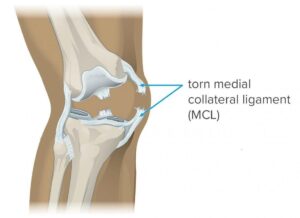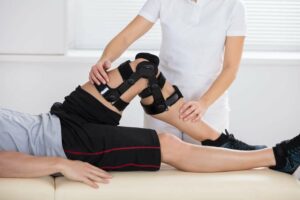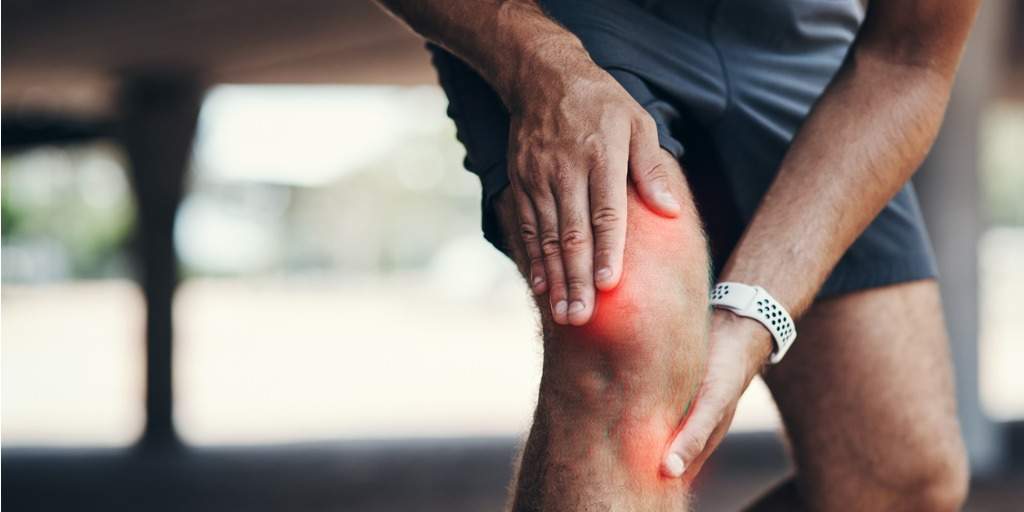If you are one of the many people who suffer from MCL pain, then this is the blog post for you. In this post, we will discuss the different treatment options available to you, as well as what you can do to speed up your recovery. MCL injuries can be extremely frustrating and disabling, but with the right treatment plan, you can get back to your normal life in no time!
Contents
What is Medial Collateral Ligament (MCL) Pain?
MCL pain is a type of injury that affects the ligaments in your knee. These injuries can be caused by a variety of factors, including overuse, sudden impacts to the knee, stretching or ripping of the ligament, or inflammation due to an infection or arthritis. It can be quite painful and may require treatment to help relieve your symptoms and promote healing.
Causes Of Medial Collateral Ligament (MCL) Pain

There are a number of different causes of MCL injuries, including accidents or collisions that result in trauma to the knee. MCL injuries can also occur as a result of overuse or repetitive movements, especially if you are engaging in high-impact activities like running or playing sports. In addition, certain medical conditions such as osteoarthritis can increase your risk of MCL injuries.
Treatment For MCL Pain
MCL injuries can be treated in a number of ways, such as with physical therapy, bracing, and anti-inflammatory drugs. Surgery can be required if your severe MCL injury does not improve with previous therapy. In order to create a treatment strategy that is appropriate for you, it is crucial to work closely with your doctor.
Let’s talk about nonsurgical and surgical MCL treatments.
Nonsurgical Treatment
The length of time it takes to heal an MCL injury depends on how severe the damage is. These wounds typically heal after six weeks. The initial treatment is to immobilize the knee and lessen pain and inflammation, regardless of the tear’s degree. Measures consist of:
- Icing
- Elevating and resting the knee
- Using aspirin and ibuprofen, as well as other oral medicines and anti-inflammatory medications
- The use of a brace allows the knee to flex but restricts side-to-side motion. The purpose of such knee braces is to prevent knee bending.
In such a case, you’ll need to modify your program to do no bending, crouching, or kneeling. To lessen swelling, keep your leg raised at all times, even when you’re seated.
Physical Therapy Program
Once the pain and swelling go down, you can start your physical therapy program. This will have exercises to help you get back to normal strength and movement. If your knee feels sore while doing these exercises, take it slow if you don’t want to make things worse. Consult with your physical therapist.
Following are some examples of physical therapy for an MCL injury:
- Using cold, heat, ultrasound, electrical stimulation, tape, and manual treatment, pain can be managed and reduced.
- Gentle range-of-motion exercises for the knee and leg with an initial focus on quadriceps strengthening to promote early knee flexion.
- Knee and leg strengthening exercises with the aid of cuff weights, resistance bands, and weight training
- Exercising on an elliptical machine, rowing, or using water for therapy.
- Training for agility and balance as well as progressive stability drills that emphasise joint proprioception—the body’s capacity to understand its location in space—are recommended.
- Functional return-to-sport training to make sure the MCL can withstand the varied loads exerted on it when participating in sports.
Surgical Treatments
Although most MCL injuries heal without surgery, there are several situations where it is the best course of action. This procedure will either rebuild or repair your MCL. Your surgeon will make an incision at the site of the torn ligament and utilize suture anchors as a fixation method to reattach the ligament to the bone. Your doctor will use either your knee tendon or a cadaver knee tendon to repair the ligament.
You can usually go home on the same day after either procedure. Following surgery, you’ll need to walk with crutches and wear a knee brace for roughly six weeks. Your surgeon will examine your knee and remove the stitches at a follow-up appointment one to two weeks after surgery. Recovery takes between nine and twelve months, depending on any associated knee issues.
How Long Does It Take To Recover?
 The length of time it takes to recover from an MCL injury depends on the severity of the damage. In general, athletes who experience a grade 1 or 2 MCL tear can expect to return to their normal activities within one to two weeks. Those with a more severe grade 3 tear may need up to eight weeks or longer to recover.
The length of time it takes to recover from an MCL injury depends on the severity of the damage. In general, athletes who experience a grade 1 or 2 MCL tear can expect to return to their normal activities within one to two weeks. Those with a more severe grade 3 tear may need up to eight weeks or longer to recover.
For MCL injuries that necessitate surgery, the recovery period can be significantly longer, lasting from nine months up to a year or more. During this time, athletes will typically need to wear a knee brace while performing physical therapy exercises and activities as directed by their doctor or physical therapist. With proper treatment and rehabilitation, the injury will recover faster.
Conclusion
In conclusion, if you are experiencing MCL pain, it is important to seek treatment without any delay. In order to minimize the risk of further injury and promote a full recovery you should take action immediately. Options for treatment include rest, bracing, physical therapy, and in some cases, surgery. With the right care and commitment to your recovery plan, you can return to your normal activities in a timely manner.
Physical Therapy help patients recover from pain. If you’re experiencing Back pain, Shoulder pain, Knee pain, Neck pain, Elbow pain, Hip pain, or Arthritis pain, a physical therapist at MantraCare can help: Book a physiotherapy session.


